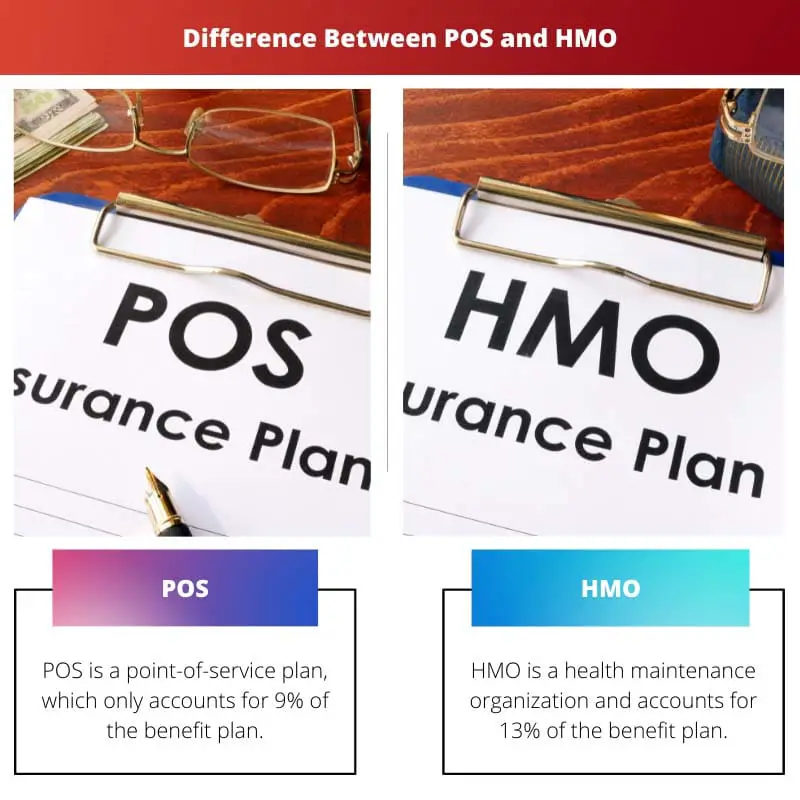Exploring the medical service industry alone can be confusing. There are loads of specialists out there. What’s more, it’s difficult to tell which will be your ideal choice.
On occasion, we may feel as if we’re the only ones upholding our well-being. Through POS or point-of-service plans and HMO plans, we also have a PCP responsible for handling the visits to other doctors.
Key Takeaways
- POS (Point of Service) plans offer more flexibility in choosing healthcare providers.
- HMO (Health Maintenance Organization) plans require using in-network providers.
- HMO plans have lower out-of-pocket costs than POS plans.
POS vs HMO
POS plans are managed healthcare plans that combine aspects of HMOs and PPOs. HMO manages healthcare plans requiring you to choose a primary care physician responsible for your healthcare. Unlike HMOs, POS plans offer more flexibility and access to healthcare providers outside of the network.

Point of Service (POS) medical insurance plans get medical services at a lower cost and a higher cost but make fewer decisions. Plans may fluctuate, but as a rule, POS plans are considered a combination of HMO and PPO plans.
We might think of suppliers and offices inside or outside the network, but our tolerance will be better when we stay inside the network.
The HMO plan depends on an organization of emergency clinics, specialists, and other healthcare providers that agree to arrange care within the organization as a trade-off against the specific installment rate they manage.
Many HMO suppliers get paid based on the premise of each component, and they pay little attention to where they see members.
An HMO, by and large, only covers care got from the arrangement’s contracted suppliers, known as “in-network” suppliers.
Comparison Table
| Parameters of Comparison | POS | HMO |
|---|---|---|
| Definition | POS is a point-of-service plan, which only accounts for 9% of the benefit plan. | HMO is a health maintenance organization and accounts for 13% of the benefit plan, but more or less a part of the business center plan. |
| Network Coverage | Adaptability, to see suppliers all through the network. | In-network possibly (aside from health-related crises or on the other hand if care isn’t accessible in the organization). |
| Referrals | Expert references aren’t needed, and you needn’t bother with an essential consideration specialist. | It may be necessary to consider the expert’s recommendation letter. |
| Deductibles | Does not have deductibles. | Have deductibles. |
| Cost | Higher monthly expenses, higher cash expenses. | Monthly fees are lower and cash fees are lower, which may include deductibles. |
What is POS?
A Point of Service (POS) plan is an overseen care medical coverage plan that gives various advantages depending on whether the policyholder utilizes in-network or out-of-network medical service providers.
The POS program integrates the terms of the two most normal medical insurance designs: the Benefit Maintenance Association (HMO) and the Preferred Supplier Association (PPO).
The POS program is like an HMO. It requires the policyholder to pick an in-network essential consideration specialist and get references from that specialist, presuming they need the arrangement to cover an expert’s administration.
What’s more, a POS plan resembles a PPO in that it gives inclusion to out-of-organize administrations, however, the policyholder should pay more than if they utilized in-network administrations.
The POS program provides transnational inclusion, which benefits patients who travel frequently. A detriment is that out-of-network deductibles will more than not be high for POS plans.
When a deductible is high, it infers that patients who use out-of-network administrations will pay the full expense of care until they arrive at the arrangement’s deductible.
A patient who never utilizes a POS plan’s out-of-network benefits would most likely be in an ideal situation with an HMO due to its lower charges.
What is HMO?
A health maintenance organization (HMO) is a type of medical insurance that uses or negotiates with doctors or clinical gathering organizations to provide consideration for fixed (and reduced) costs.
HMOs may be more reasonable than different types of medical insurance, but they limit your decisions about where to go and who to see.
An HMO plan requires that you adhere to its organization of medical care experts, clinics, and labs for tests; otherwise, the administrations aren’t covered. Exemptions are made for the crisis.
HMO is a coordinated public or private entity that provides urgent and supplementary welfare management for its supporters.
The association organizes healthcare providers by signing contracts with important doctors, clinical offices, and subject matter experts.
The clinical substances that go into contracts with the HMO are paid a settled-on expense to offer a scope of administrations to the HMO’s endorsers.
Agreeing to installment payments allows HMOs to offer lower costs than different types of medical insurance plans while maintaining their organisation’s high level of attention.
HMOs work in an assortment of structures. Most HMOs today don’t fit perfectly into one structure; they can have various divisions, each working under an alternative model, or mix at least two models.
In the employee model, the doctor is paid and has a workplace in the HMO structure. In this situation, doctors are immediate workers of the HMOs.
This model is an illustration of a shut board HMO, inferring that contracted doctors may see HMO patients.
Main Differences Between POS and HMO
- Representatives who choose the POS plan can have the advantages of both the POS and HMO plans, while the HMO program has very strict rules.
- The POS is a more adaptable arrangement than the HMO.
- There is no compelling reason to pick a Primary Care Physician in a POS plan while it is required in an HMO plan.
- Under the POS, the patient should sometimes pay any regulatory agency obtained by the out-of-network provider and then record a case for repayment from their insurance agent. Patients don’t have to document a case with an HMO because the insurance agency pays the medical service supplier straightforwardly.
- The POS program is more flexible than HMO.


The article gives a comprehensive overview of POS and HMO plans and is immensely valuable for individuals navigating through healthcare choices.
A very insightful article. It clarifies the differences between POS and HMO in great detail.
Yes, this article provides an in-depth comparison of POS and HMO plans, which is very helpful.
The detailed comparison table and the explanations provided really help in understanding the nuances of POS and HMO plans.
Thank you for shedding light on the intricate details of POS and HMO. This article is a great read for those seeking to understand these healthcare plans.
The article offers a clear and concise comparison between POS and HMO plans, making it easy for readers to comprehend the details.
This article effectively captures the complexities of POS and HMO plans and provides clarity on the benefits and drawbacks of each.
This article is a valuable resource for those looking to gain insight into the intricacies of POS and HMO plans. Well-presented and highly informative.
In-depth content that thoroughly explains the concept of POS and HMO plans. Well researched and highly informative.
Agreed. The article provides a well-rounded understanding of these healthcare plans.